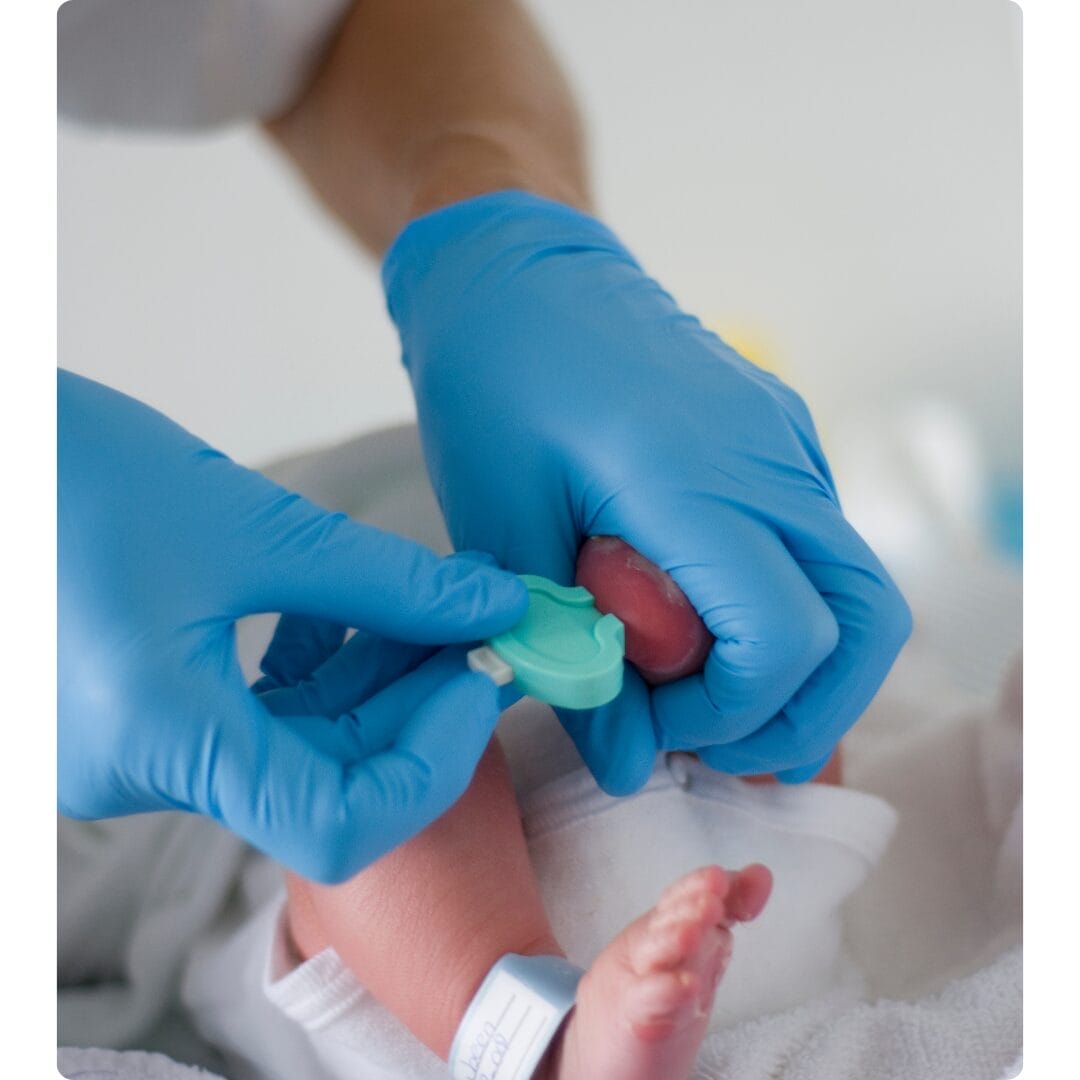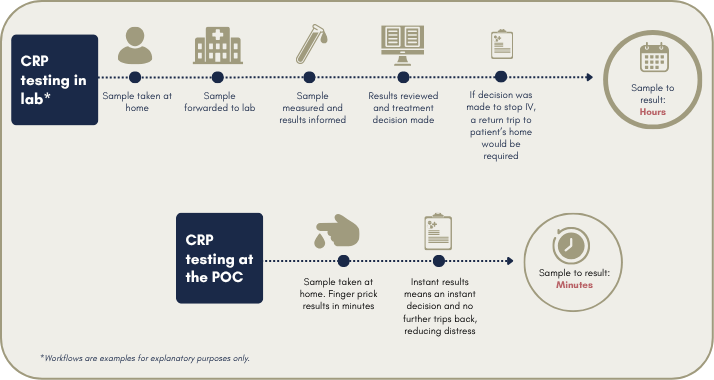
Bridging point of care CRP testing to a paediatric virtual ward service
Background
Darent Valley Hospital, part of Dartford and Gravesham Trust, identified the need for a point of care (POC) C-reactive protein (CRP) test to enhance clinical decision-making and streamline the patient pathway within their children’s virtual ward service.
After evaluating point of care devices against their traditional laboratory analyser method, the QuikRead Go was selected as the ideal solution to improve service delivery and patient care.
Challenge
Before implementing POC testing with the QuikRead Go, the process for testing CRP in young patients involved a venous blood draw followed by sending the sample to the central laboratory.
This method resulted in significant delays—often hours, or even overnight—before treatment decisions could be made. The additional step of a second patient visit was required to either escalate or de-escalate antibiotic treatment based on the results. Compounding this issue was the risk of sample haemolysis during transport, which not only delayed diagnosis further but also caused frustration for both the clinical team and families, who often faced additional visits for new blood samples.
Aim
- Improve patient experience
- Reduce repeat appointments
- Allow easy transportation between patient homes
Evaluation
The point of care team, led by Darren Browne (POCT Manager), supported the performance evaluation of point of care devices against their laboratory analyser method. The QuikRead go was selected on the basis of the following:
- Ability to test children under 2 years old
- Portability with a bag, allowing easy transport between patient homes
- Small sample volume (10 µL), ideal for young patients
- Fast results in just 2 minutes
- Room temperature storage of consumables, with a shelf life of up to 12 months
- Battery and mains powered, offering flexibility
- Bi-directional connectivity (wired and wireless) to AegisPOC middleware
- Wide haematocrit range (15-75%) suitable for infants under 2 years of age
Their evaluation involved the following:
- Precision study: Three levels of QuikRead go quality controls were ran with 6 replicates over 5 days.
- Bias assessment: 39 patient samples were run on the QuikRead go as well as their Beckman Coulter laboratory analyser. These samples covered a low (0-10mg/L), medium (10-80mg/L), and high (80-200mg/L) CRP value range (as defined by the laboratory analyser method).

Importance of haematocrit correction
In paediatric care, accurate C-reactive protein (CRP) measurement is critical, yet often compromised by variations in haematocrit (HCT) levels. Infants and toddlers naturally exhibit a wide HCT range—from 29% to 68%—far from the adult average of 40% typically used to calibrate CRP point-of-care tests.
Without HCT correction, CRP results can be significantly skewed, potentially leading to misdiagnosis. The QuikRead go system, with its automated HCT correction and industry-leading range of 15–75%, ensures reliable CRP readings across all ages, especially for children under two years. This makes it a vital tool in paediatric diagnostics.
